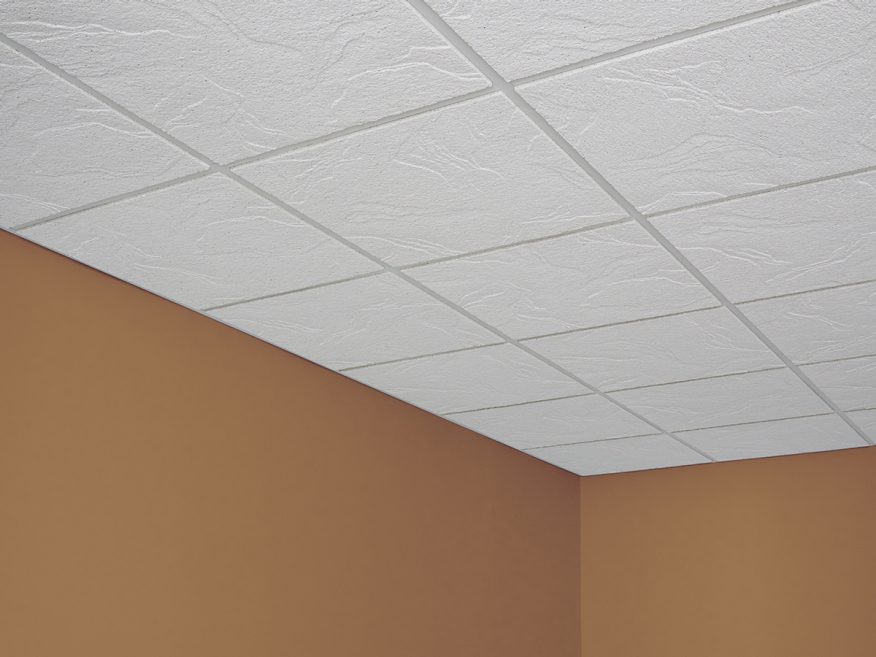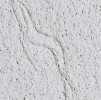Sign In
You're All Set
Welcome back! You are now signed in.
You have been logged out
You have been logged out due to inactivity
Forgot Password
Please enter the email address you used to create the account. We'll send you a link that lets you create a new password.
You're All Set
Please check your email. Click the link in the email to create a new password.
Reset Password
You're All Set
Success! Your password has been updated.
Change Password
You're All Set
Success! Your password has been updated.



Sandrift™ Acoustical Panels
Uniquiely textured cast product with durable surface that resists scrapes commonly caused by accessing the ceiling plenum.




Overview
Overview
Exceptionally durable, with superior sound control and sag resistance, these uniquely medium-textured panels are an artful custom ceiling option. Each Sandrift™ Acoustical Ceiling Panel is made with a cast process that enhances its appearance, and gives it excellent sound absorption and durability. Their mildew and mold resistance, and high noise reduction qualities, make them a high-quality, versatile choice for many ceiling projects.
Sound Absorption
0.70 NRC
Sound Attenuation
38 CAC
Light Reflectance
Up To 0.83
Recycled Content
69.9 %
Main Features
Sandrift™ Acoustical Ceiling Panels have a unique pattern that compliments their unique array of high-quality performance metrics. Not only do these custom panels offer one-of-a-kind ceiling design, but they rival many of the best options for combined light reflectance, sound control, and sag, mold and mildew resistance.- Uniquely textured cast product with durable surface that resists scrapes commonly caused by accessing the ceiling plenum
- Color throughout masks nicks and scratches
- ClimaPlus™ 30-year lifetime system warranty against visible sag, mold and mildew
- USDA Certified Biobased Product
- Zero VOC emissions exceeds CA Specification 01350
- Available with High Recycled Content (HRC)
Applications
- Administrative Offices
- Bars Restaurants and Dining Areas
- Cafeterias
- Classrooms
- Convention and Meeting Rooms
- Corridors and Hallways
- Department Stores and Boutiques
- Executive Areas, Conference Areas and Board Rooms
- Galleries and Exhibit Spaces
- Guest Rooms and Suites
- Health and Fitness
- Lobbies and Reception Areas
- Media Centers, Music Rooms and Libraries
- Nurseries and Birthing Rooms
- Open Plan Offices
- Patient Rooms
- Traditional Offices
Specifications
Performance
- Sound Absorption (NRC) 0.70
- Sound Attenuation (CAC) 38
- Light Reflectance 0.83
- Mold & Mildew Resistance Yes
-
Fire Resistance
- Fire Rating Class A
-
ASTM E1264
- astm-e1264-class III: Mineral base with painted finish, Z: Other patterns, Form 4: Cast or molded
-
ASTM E84
- Flame Spread 25 or less
- Smoke Developed 50 or less
- Fire Rating Class A
Sustainability
- GREENGUARD Certification Yes
- Recycled Content 69.9%
- VOC Emissions Low-emitting
- Bio Based Yes
Physical Data
- Thickness (in.) 3/4
- Color White
- Edge Shadowline
- Panel Size 2 ft. x 2 ft.
- Material Mineral Fiber
Warranty
-
Warranty
USG Ceilings Commercial Application Warranty (English) - SC2102PDF 148 KB
Installation
Installation Guide PDF 822.1 KB
USG Ceilings Portfolio Series: Episode 1 - Installation & Edge Style
USG Ceilings Portfolio Series: Episode 2 - Performance Features
USG Ceilings Portfolio Series: Episode 3 - USG Panel Types
Documents & Files
Data Sheets & Specifications
| Data/Submittal Sheet (English) | PDF 921.4 KB |
| Architectural Specification (English) | DOCX 118.0 KB |
Catalogs & Brochures
| System Catalog (English) | PDF 47.2 MB |
| Brochure (English) |
Design Files
| CAD and Revit Files (English) |
Installation & Technical Manuals
| Technical Guide (English) | |
| Installation Guide (English) | PDF 822.1 KB |
SDS, Certifications & Reports
| SDS (English) | PDF 136.1 KB |
| SDS (Spanish) | PDF 137.0 KB |
| Certificates (English) | PDF 1.1 MB |
Warranties
| Warranties (English) | PDF 147.7 KB |
Sustainability
| HPD (English) | |
| Greenguard Certificate (English) | PDF 293.9 KB |
| EPD (English) |
Ask a question
Our customer support team will get back to you as soon as possible.
Question Guidlines
- Questions should relate to this product specifically.
- For help with pricing, availability, or delivery, please call 800.874.4968 (Monday–Friday, 7am–6pm Central)
- All questions and answers follow USG’s Terms & Conditions.
- Your question and USG’s answer may be posted to this page in the future, but none of your personal info will be included.
q & a
-
Why is NRC important?
NRC is very important in open office plan environments where there are few full height walls to help absorb or block sound.
-
What does ClimaPlus™ mean?
USG’s line of products with ClimaPlus™ Performance have additional resistance to temperature and humidity. This in turn provides additional resistance to sagging and warping of the ceiling panels.
-
What does LR stand for?
LR stands for light reflectance. It is a measure of the percentage of light which is reflected off of a given panel surface. Typically, the whiter and smoother the ceiling panel, the higher the LR value.
-
What is NRC?
NRC stands for Noise Reduction Coefficient. It is a measure of how much sound is absorbed by a given material. It is listed as a decimal and relates to percentage sound absorbed.
-
When referring to ceiling panels, what is the meaning of type, form and pattern?
These categories refer to ASTM Test E 1264.
Type refers to the base material of the panel.
Form refers to the manufacturing process of the panel.
Pattern refers to the type of texture or pattern in the panel. -
What is the difference between Class A and Firecode® branded materials?
Class A signifies that a panel attained a flame spread index of 25 or less (based on 100 for untreated red oak) when tested in accordance with the Standard ASTM E 84. The Firecode® brand signifies that the panel has been classified as a protective membrane in a floor-ceiling or roof-ceiling assembly in accordance with the Standard ASTM E 119. All Firecode® protective membranes offered by USG have attained a Class A rating.
-
Does USG offer both types of ceiling panels — Class A and Firecode® branded panels?
Yes. Some patterns are offered in both Class A and Firecode® branded formulations.
-
Does the ceiling tile and grid system alone provide a fire-rated assembly?
No. The ceiling system achieves a time rating based on the entire assembly which includes roof deck or floor deck assembly.
-
When hold-down clips are required, how much space should I leave between the clips, on the grid?
The recommendation for hold-down clip spacing is two clips per panel, centered on the grid, between the panels.
-
How many acoustical panel types does USG offer?
USG offers four major types of acoustical panels as well as Gypsum based panels for special applications. They are: Wet-Felted, Cast, "X" Technology and Fiberglass.
-
What is the best way to cut a reveal in a ceiling panel?
The best way to cut a reveal edge in a panel is with a utility knife or a special Reveal edge tool.
-
How far in advance can I order ceiling panel before installation?
Storage time of materials at the job site should be as short as possible, and environmental conditions should be as near as possible to those specified for occupancy. Excess humidity during storage can cause expansion of material and possible warp, sag, or poor fit after installation. Chemical changes in the mat and/or coatings can be aggravated by excess humidity and cause discoloration during storage, even in unopened cartons. Cartons should be removed from pallets and stringers to prevent distortion of material. Long-term (6-12 months) storage under uncontrolled environmental conditions should be avoided.
-
Why is CAC important?
CAC is important when there is a need for privacy between spaces.
-
What is the minimum NRC recommended for open office plan environments?
It is best to use a minimum of .70 NRC and up to .80 - .90 NRC panel for this type of application.
-
What is CAC?
CAC stands for Ceiling Attenuation Class. It is the measure of the blocking of sound through one ceiling plane, into the plenum above, and back through the other ceiling plane to an adjacent space.
-
Why would I use one ceiling panel type over another?
The different panel substrates provide panels with unique characteristics. The use of the different panels will vary based on specific needs and application.
-
Have a question?
Ask USGLet us do the research. We'll get back to you as quickly as we can.
-
Need help right away?
Call our Technical Support team at 800-874-4968 (Monday-Friday, 7:30 am - 4 pm Central).



